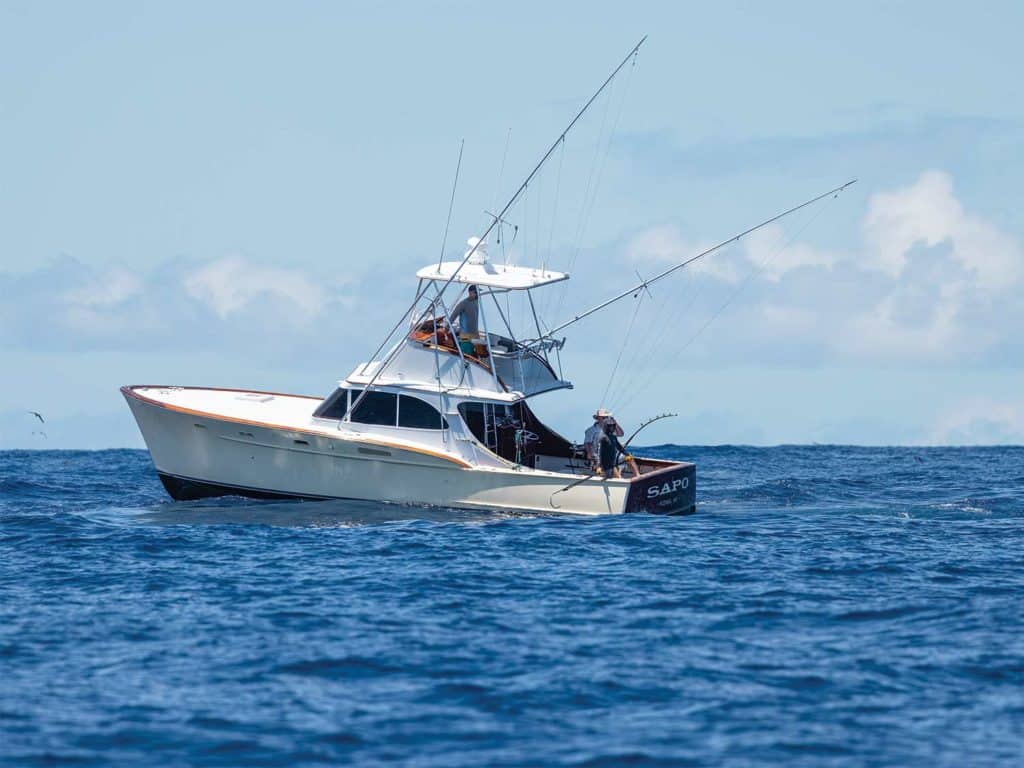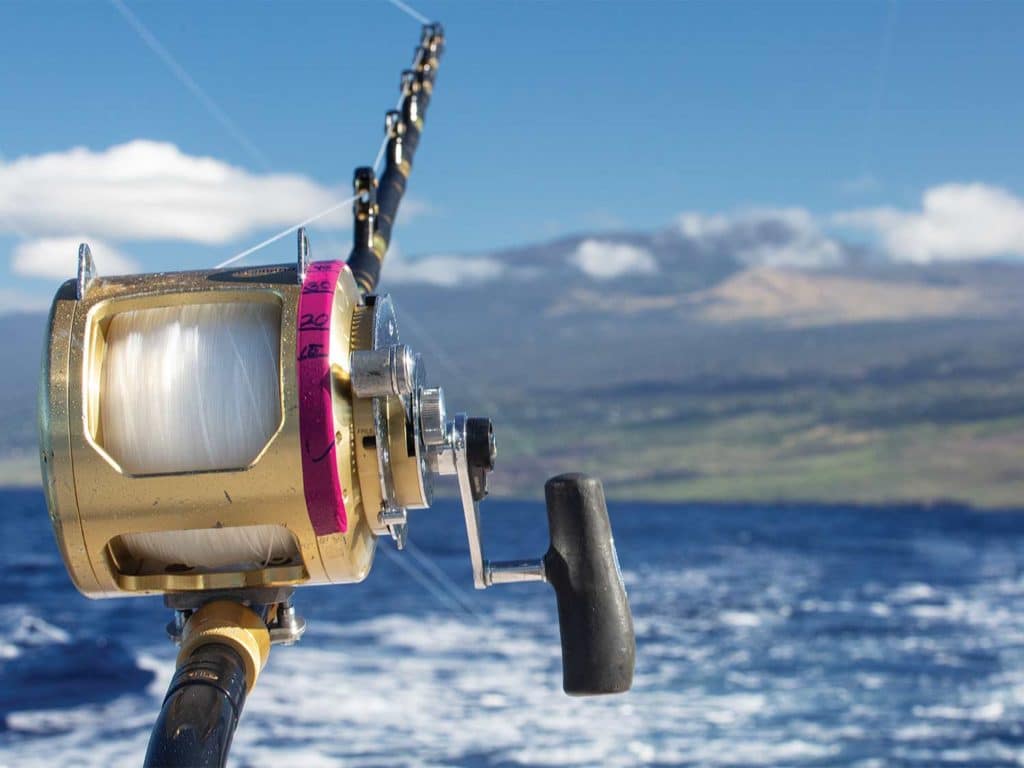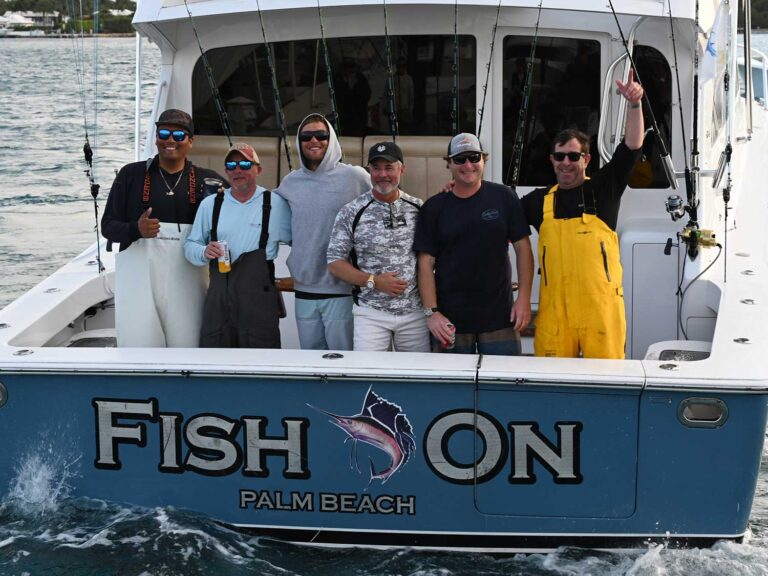
Special delivery: Sign up for the free Marlin email newsletter. Subscribe to Marlin magazine and get a year of highly collectible, keepsake editions – plus access to the digital edition and archives.
Catching a giant marlin is the ultimate test of almost everything that’s included in the pages of this magazine. Bringing all the elements together to land a fish of this magnitude takes a ton of skill—and a little luck. Those who’ve experienced the largest of marlin know that some are almost uncatchable, so using every tool at your disposal and coercing the fish into making a mistake is often the only way to get it within reach of the leader.
Drag management is one of the most critical aspects of the catch process. Drag is all about timing; adding or reducing pressure at the right times can be the difference between winning and losing the battle. It basically comes down to working smarter, not harder. But before you push up the drag, it’s important to note that other factors also come into play to successfully put on the heat. Heavy drag is the ultimate test of your tackle, and it will be pushed to the max—if there are flaws in your knots, crimps or other connections, this is where they’ll be exposed.
Watch: Take a ride on Wall Hanger, a waterjet-powered beauty from Spencer Yachts.
Strike and Torque
The general rule of thumb for setting drags is that your lever drag at strike is about 30 percent of the line’s breaking strength. For a 130, that puts you at nearly 40 pounds at the button and around about 75 pounds at full sunset. This can be tweaked while pulling drags and adjusting presets at the dock, but the key is making sure the reel still has a free-spool and room to move at the lower end, as well as the heavy lifting power on the sunset side. For reference, this strike drag at the button shouldn’t necessarily be your actual trolling drag when you strike a fish. This position can vary based on preference, hook size and other factors, but when trolling lures on a 130, I typically fish my trolling strike drag ranging somewhere between 18 and 30 pounds.
You can put heavy drag on a fish as long as you’re directly connected to it and don’t have a lot of line belly in the water. Line belly creates resistance with line ripping though the water, and this inertia can break the line when a fish is speeding away from you. It’s also important to note that when you don’t have a lot of line on the spool, the tension will increase as the line on it decreases. This means you’re working with more drag than what you have marked on the reel when you’ve got a lot of line out. If you paid attention in physics class, you’ll make the connection that drag systems work under the torque equation, where torque equals force times radius.
When applied to fishing reels, the radius is measured from the center of the spool to where the line is on the reel. Essentially, when you have half of the line out, your drag pressure will double from what it was when the spool was full, even while keeping the drag lever in the same spot. Keep this in mind when working the lever with a lot of line out: Tension can be much heavier than the marked drags indicate, and you might have to drop your drag closer to free-spool if you’ve got a fish blistering line with most of the spool out. I mark my reels with red tape at the maximum low-drag position before free-spool so that my angler knows how low they can go on a screaming run with a skinny spool. This will save you from hitting full free-spool, and allow you to safely reduce the resistance from the belly in the water.

Lighten, Tighten, or Plane It Up
This brings us to a few other situations where you’d want to loosen the drag. In many instances it can be helpful, or even mandatory, for you to lighten up, and most involve situations where a fish is acting erratically. If you’re using heavy trolling drag, small fish can often be flipped over on the bite, causing the hook to pull before it has had a chance to find its mark. Another is a fish that eats charging at the boat and then turns away at full steam. This inertia often can cause the line to snap back and break from the quick and extreme differences in pressure. It’s also beneficial to go light on the drag if the fish comes up jumping or shaking its head out of the water. If there’s too much drag, you stand a good chance of ripping the hook out of its mouth. Moderate to light drag also can help keep a fish closer to the surface, because sometimes a fish will feel the need to dive under heavy drag; in that case, keeping it a bit lighter can allow you to stay closer to the fish, especially early in the fight.
If a big marlin makes a beeline for the deep, this often means it’s headed down to die, and this is where it becomes imperative to push up the pressure and stop it. The more line you save while the fish is making its death dive, the better your chances of landing it. If the fish dives down and dies, this means you’ll have to plane it back up to the surface. Using the planing technique to bring a dead marlin to the surface means that you’ll probably have to use every bit of drag at your disposal to lift the creature from the depths. This usually takes a while, and it puts a lot of strain on the angler.
So, with the risks involved, what’s the point in putting a pile of drag on a fish? While it’s nerve-wracking to hear that main line pinging like a guitar string, heavy drag can break the fish’s spirit and allow for a quicker capture or release. It’s safer for the fish as well, because the more time that goes by, the greater the chance it gets sharked or tail-wrapped, or dies during the fight. And there’s no point in fishing with a 130 if you’re never going to put more than 20 pounds of drag on it. However, this doesn’t mean that you need to be maxing out your drag all the time either. You don’t want to use more than you actually need, but you should become comfortable applying it when necessary.
Read Next: Learn more about the past, present and future of the Offshore World Championship.
Virtually every big-marlin captain I know says that you’re trying to do whatever you can to wear out the fish and keep the game close; so, by not allowing the fish to catch its breath, you can pounce on these small windows of opportunity.
If you find yourself doing battle with a grander-class marlin, respond to it accordingly, and don’t be afraid to use the full range of the lever. Drag management takes some time getting used to, but gaining experience with high heat will ease your stress when the pressure is really on.







